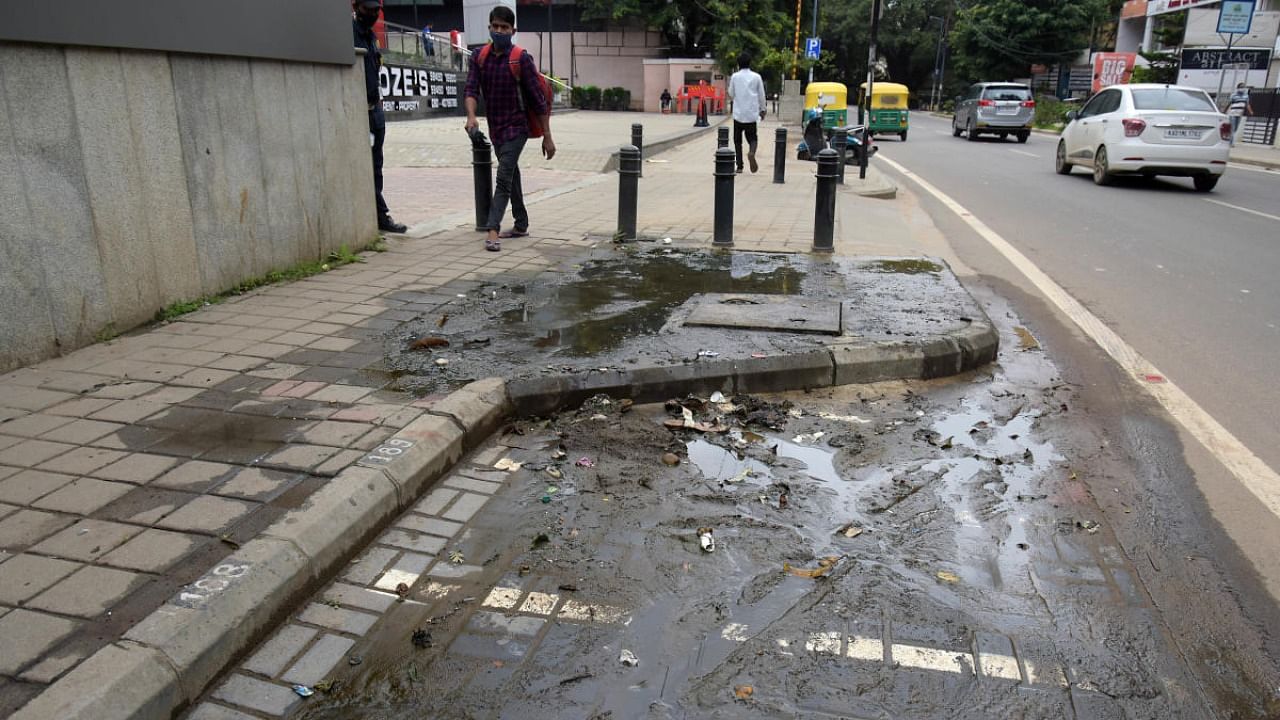
Currently, Bengaluru is witness to a slew of smart city road construction that claims its ancestry from the erstwhile TenderSURE (Specifications for Urban Road Execution) roads, but from the looks and performance thus far it seems to be a descendant from a ‘business as usual’ gene pool.
When we ideated the TenderSURE back in 2007, it had a few distinct characteristics — wider footpaths with utilities buried below; roads with pedestrians at the heart of the planning followed by a hierarchy of cyclists, public transport and private motor vehicle users. It involved all agencies coming on board at the project outset to ensure inter-agency planning and coordination.
It had very detailed good-for-construction drawings for each section of the road based on road contours. It provisioned for other uses and street vendors wherever possible; street lights were repositioned and properties were linked to the new utility lines.
The initial capital costs excluding the new utilities were higher than conventional roads by about 60% with a payback over six years due to lower need for annual tarring, pothole filling, et al.
As we have noticed on Commercial Street and other recently done city centre roads, the need for repair, road cutting, footpath removal, addressing pedestrian obstructions have arisen almost concurrent with the inauguration of these roads. This points to a systemic failure in the way these roads have been conceptualised and implemented with likely fault lines along the desired practices mentioned earlier. There are benchmarks for these newer roads to be compared, such as Vittal Mallya mall road built over twelve years ago and the first set of seven roads like Residency Road, St. Marks Road, Cunningham Road, etc. of 2015 vintage.
Also read: All is well with TenderSURE, says BBMP
Abraham Lincoln famously said that if he had six hours to cut a tree, he would spend four hours sharpening the axe. In the case of the new roads, one fears that the kind of planning and detailing needed at the start is not happening.
This seems to be evident from the relative lack of provisioning of bus bays, parking area and street light positions which is based on a comprehensive review of the Right of Way (ROW) across the road stretch, fixing the road lane width based on the minimum ROW available and intelligently planning for other uses. One would be interested in seeing the kind of engineering drawings released to the contractors for these roads — the older conventional, pre-TenderSURE roads had hand-drawn sketches!
BWSSB and BESCOM were integral to the TenderSURE project with planning for future decades and inter-agency meetings to unclog roadblocks on a weekly basis based on field realities. Given the kind of road cutting one witness, this protocol seems to have broken down. In a similar vein, efforts to ensure the Optical Fibre Cables (OFCs) go underground are observed more in the breach.
For the TenderSURE roads, there were third party inspections which also ensured that the project management function played its due role. One wonders what role is being played by those who are meant to supervise and oversee the entire project and ensure inter-agency coordination which is supercritical.
The earlier set of model TenderSURE roads was undertaken with dollops of attention and ‘ringfencing’ any potential hazards to successful project execution. It is likely that with the scaling up of these roads, the requisite knowledge transfer and hand-holding has not happened. Further, given our past track record in the civic space, there is often an institutional arrogance that translates into a ‘know-it-all’ attitude and unwillingness to learn from earlier experiences or others.
This results in a repeat of our ‘business as usual’ projects model, unfortunately with a higher price tag per kilometre in this case.
If the earlier practice of a five-year bundling of performance guarantee and maintenance requirements as part of the rate contract is in vogue, we can demand the fixes of the road contractor. But we need to ensure that the basic plan for the road stretch is a good one and the agencies adhere to their respective roles and deliver. One lives in hope!
(The writer is a Bengaluru-based urbanist.)